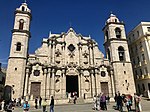Havana Plan Piloto

The Havana Plan Piloto was a 1955–1958 urban proposal by Town Planning Associates, which included Paul Lester Wiener, Paul Schulz, the Catalan architect Josep Lluis Sert, and Seely Stevenson of Value & Knecht, Consulting Engineers, seeking to combine "architecture, planning, and law", in a project heavily influenced by the politics of Fulgencio Batista which in turn were dictated by his involvement with the American Mafia and their desire to augment United States tourism, and thru his architects and various designers, the modernist principles of the Congrès Internationaux d'Architecture Moderne (CIAM) and the Athens Charter. The Charter got its name from the location of the fourth CIAM conference in 1933, which, due to the deteriorating political situation in Russia, took place on the "in SS Patris II" bound for Athens from Marseilles. This conference is documented in a film commissioned by Sigfried Giedion and made by his friend László Moholy-Nagy The Charter had a significant impact on urban planning after World War II and, through Josep Lluis Sert and Paul Lester Wiener, on the proposed modernization of Havana and in an effort to erase all vestiges of the 16th-century city.
Excerpt from the Wikipedia article Havana Plan Piloto (License: CC BY-SA 3.0, Authors, Images).Havana Plan Piloto
Geographical coordinates (GPS) Nearby PlacesShow on map
Geographical coordinates (GPS)
| Latitude | Longitude |
|---|---|
| N 23.1359 ° | E -82.3583 ° |











